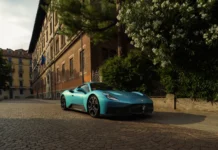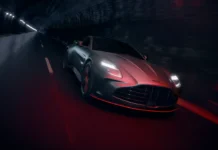
More states are adopting roles to mandate 100% EV new vehicle sales by 2035, with Oregon being the latest example.
Oregon joins California, Washington and Vermont to formally mandate all electric car sales in the state, by a 3-1 vote from its Environmental Quality Commission. The “Advanced Clean Car II Rule”, as it’s called, will gradually phase in obligations for manufacturers to sell a greater share of EVs in the state over the coming thirteen years. From there on, existing gas and diesel vehicles can remain on the road, but no new internal combustion-powered cars may be sold.
This is the fourth measure in a series of rules that set out stricter standards for trucks and fuels, as well as wider-ranging efforts to curb emissions. As The Oregonian reports, the effort underscores the state’s ambitions to reduce climate-warming emissions by up to 90% by 2050.
Beginning January 1, 2026, Oregon’s new rule stipulates that 35% of new vehicle sales in the state must be battery-electric, hydrogen fuel cell vehicles or plug-in hybrids. That percentage rises to 100% electric, zero emission vehicles by 2035. Oregonians can still purchase and register gasoline vehicles outside the state (at least, in states that will allow it by 2035) and buy used gasoline vehicles within the state.

ACCII also sets targets to improve EV accessibility
Not only does the rule mandate new EV sales, but it also lays down parameters for what sort of vehicles people will have access to buy. New pure-electric vehicle sold in Oregon from 2035 onward must have at least 150 miles of real-world driving range — so that will rule out cars like the Mini Cooper SE and Mazda MX-30 — have fast-charging capability and come standard with a Level 2-capable charging cable that’s at least 20 feet long. Automakers must also provide 8-year/100,000-mile battery coverage to satisfy “minimum warranty and durability requirements” for new EVs. Battery degradation after the warranty elapses must still have at least 80% of its maximum capacity.
According to the new rulemaking, plug-in hybrids should have at least 50 miles of EPA-rated, all-electric range. PHEVs require “extended warranty on emission related components for 15 years or 150,000 miles (whichever comes first), and include similar charging capabilities, inlets, and charging cords as that of EVs.” Finally, manufacturers must also make available repair information and the necessary tools to non-dealer franchise shops.
As part of the carrot-and-stick approach, Oregon will offer incentives to manufacturers to produce lower-cost electric vehicles, sell EVs to community car share programs and supply used cars to dealerships participating in low-income assistance programs.
Leah Feldon, interim director for the Department of Environmental Quality says of the new framework: “These rules are a support mechanism, they are not the driving force. They would create a signal in Oregon: Bring your zero emissions cars here, bring the infrastructure, and for the grid, get it ready.” The Environmental Quality Commission, which oversees the DEQ, approved the rule, with plans to check in on progress starting in 2028.
While commission spokesperson Rachel Sakata said most of the public response was positive, 200 of the 700 total responses were negative. Particularly in rural areas, a primary concern remains the relative lack of infrastructure to travel the distances they need. “There are a lot of people in the state who don’t get where this is going, said Greg Addington, the commissioner who voted against the rule.

























